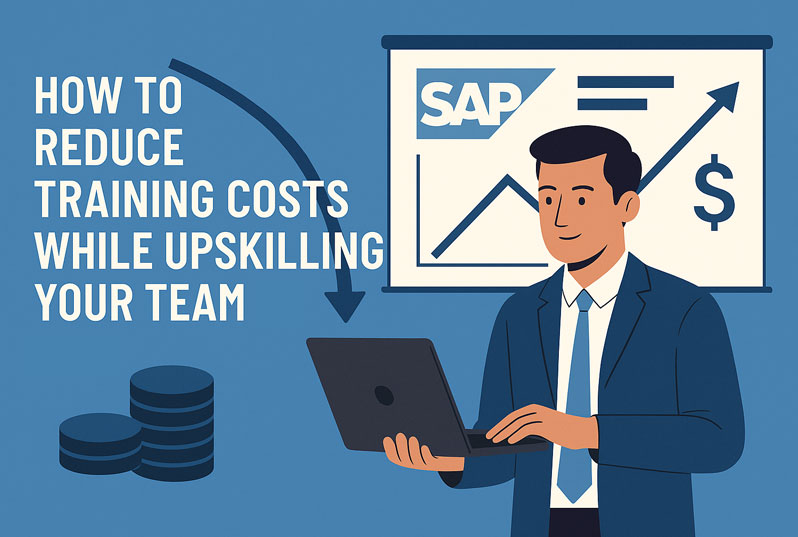Four Skills to Help You Become an Excel Expert
by Michael Management
 Mastering Microsoft Excel can not only make day-to-day tasks easier and more efficient but improve your employability and professional value. To stay relevant in this growing digital world, you need to be up to date with the tools and skills that will allow you to work most efficiently, including learning Excel.
Mastering Microsoft Excel can not only make day-to-day tasks easier and more efficient but improve your employability and professional value. To stay relevant in this growing digital world, you need to be up to date with the tools and skills that will allow you to work most efficiently, including learning Excel.
We are going to dig into not just the basics of Excel, but four advanced techniques and tools that can take your Excel skills to the next level: Data Analysis, VBA Programming, PivotTables, and Power Query.
What is Microsoft Excel?
Microsoft Excel is the industry standard for spreadsheets and is a part of the Microsoft Office suite of software. Excel consist of sets of rows and columns that feature:
- Numbers
- Text
- Formulas
- Calculations
- Graphing tools
- PivotTables
1. Data Analysis
The data analysis functionality in Excel is commonly underutilized.
By taking advantage of the built-in data analysis tools in Excel, you can instantly create different types of charts, including line and column charts, or add graphs. Analyzing large data sets with Excel makes work easier by being able to:
- Apply table styles
- Apply conditional formatting
- Work with only cells you want to analyze
- Find the minimum, maximum, and totals of a particular range of data
- Quickly calculate the average values in a particular range of data
The first skill course included in our Microsoft Excel Learning Path, Complete Excel 2019 for Beginners, walks through the data analysis functionalities of Excel. In this course, a solid grounding in the basics of Excel is provided to guide you towards becoming more confident with spreadsheets and bring your knowledge to an intermediate level. Exercises and sample files are provided along the way to provide hands-on practice as you start performing data analysis to become more confident with spreadsheets.
2. VBA Programming
Visual Basic for Application, VBA, is a macro programming language. VBA is a built-in programming language in Excel that allows you to write your own custom functions or commands in a spreadsheet. Once you master the VBA language, you can take the ease and speed of your work to a whole new level to improve efficiency and reduce repetitive work.
Why Learn VBA?
VBA will allow you to expand beyond the tasks you can perform with the built-in Excel tools to automate frequently performed tasks.
As you become more familiar with Excel, you will notice that while the built-in tools have already advanced your work productivity, additional customization will allow you to take your work to the next level. Using VBA allows you to create custom functions and automate tasks.
What can you do with Excel VBA?
Using Visual Basic for Applications in Excel you will be able to write custom functions and commands whenever you need them.
Specifically, some things you will learn in the two SAP Visual Basic for Applications skills courses, Excel VBA Programming for Beginners & Excel VBA Programming – Intermediate, feature how-tos in the following areas:
- Automate Excel tasks and operations that you perform frequently
- Define and manage variables - subroutines and functions
- Use input boxes and message boxes to interact with end-users
- Create cross-functional flowcharts
- Use advanced methods for automating tedious Excel jobs
- Write and implement Excel events
- Design and implement specialized classes of objects
- Customize the right-click menu within cell range
3. PivotTables
PivotTables are a powerful data analysis function. A PivotTable is a table that consists of rows, columns, data fields, and pages. It is used to store the summary of a certain data set in a condensed manner so you can easily analyze data in a more meaningful way. The components of the PivotTable can be easily moved around which enables you to manipulate the data in real-time, view differences in a large amount of information, and organize a large amount of data.
Why Learn PivotTables?
You can advance your data analysis skills and organize information more efficiently with the use of PivotTables. Use PivotTables to perform advanced data analysis and make use of the following features:
- Sorting
- Slicers
- Timers
- Calculated fields
- Conditional formatting
What can you do with PivotTables?
Using PivotTables in Excel you will be able to perform advanced data analysis.
- Quickly organize data
- Easily manipulate data
- Quickly report on data
Excel PivotTables helps you to quickly organize customized tables from large data groups allowing you to analyze the data more efficiently. Manipulating the data once it’s organized in a PivotTable will help you identify recurring patterns, if any. Patterns and themes in the data will help in accurately forecasting and reporting on the data. PivotTables help to create reports efficiently, saving time from creating manual reports.
Specifically, some skils featured in the Microsoft Excel Advanced PivotTables course are how-to:
- Format a PivotTable, including adjusting styles
- Create a Pivot Chart and add sparklines and slicers
- Create an interactive dashboard
- Use GETPIVOTDATA
- Use 3D Maps from a PivotTable
4. Power Query
Ready to make your Excel spreadsheet even more powerful? Power Query allows you to analyze your data right from within Excel, while seamlessly connecting to a wide range of external data sources. You can easily reshape and transform your data along the way if necessary.
Why learn Power Query?
Power Query is a built-in feature that provides fast and easy data gathering and shaping capabilities.
Power Query allows you to:
- Search for data sources
- Make connections
- Shape, or manipulate, the data to meet your needs
- Share your findings
- Query to create reports
What can you do with Power Query?
With Power Query, you can find and connect data across millions of rows of data from Excel or other databases. Specifically, you can use Power Query to:
- Manipulate and organize your data
- Perform detailed analysis of millions of rows of data
- Merge and append queries
- Set up and manage the relationship in a data model
The last in-depth skills course in our Microsoft Excel Learning Path, Power Pivot, Power Query & DAX in Excel, explains all about Power Queries in addition to Power Pivot and DAX to advance your mastery skills of Excel.
Mastering Excel
Complete the Michael Management Company Microsoft Excel learning path to increase your excel skills from a spreadsheet novice to an Excel Master. After you complete this path you will be comfortable working with all of the basic to advanced techniques.
by Michael Management
More Blogs by Michael Management

How to Build an SAP Training Program for Your Company
Building an SAP training program is not just about onboarding user...

How to Reduce Training Costs While Upskilling Your...
Implementing SAP is a major investment for any organization but wi...

Related Blogs

5 Tips for Managing Remote Teams
Remote work has become the new normal for many companies in the United...

Introducing Our Top Student Thomas Golda
Q: In August, you were our #1 student, earning nearly 6,000 skills poi...

SAP Training for HR: 3 Career Paths You Can Take
Are you a Human Resources professional looking to advance your career...
.png)

